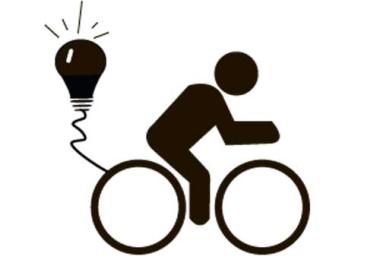As the world progresses and population increases, any and all finite natural resources will inevitably be depleted and thus should be considered non-renewable—not long-term solutions to our ongoing energy needs.
Despite this discouraging fact, there is one resource that promises to become more and more plentiful—people.
People can generate energy, and I'm not talking about hooking them up to machines to use them like batteries a la The Matrix; just good old-fashioned physical effort, exemplified on a small scale by the Valley's own Pedal People and similar organizations that have sprung up around the country.
In this age of technology and increasing energy consumption, isn't it high time to take this concept to a more ubiquitous macro-model, implementing it on a truly grand scale?
There do exist electricity generators that humans can power through their own physical effort (there are a couple of examples available for sale at www.windstreampower.com), and there doesn't appear to be any good reason why we haven't converted huge old factory buildings into massive human power generation facilities. These facilities could be filled with bicycle-style generators and arm-cranked motors of several varieties (to allow for resting various muscle groups). These machines, especially with a few modifications, are capable of generating 100 watts of power per person cranking them.
In Portland, Ore. a fitness center, the Green Microgym, has made headlines by hooking spin bikes up to a generator; the owner expects to cut his electric bill and perhaps eventually to provide energy to the whole gym by using member power to create electricity.
Mandatory participation in human-powered energy programs could be implemented as a requirement for receiving unemployment benefits, say, at two hours a day for five days a week, with every non-disabled person who is collecting required to report to a local generation center. At the current number of (roughly) 6 million unemployed, that would equal 60 million hours a week of power generation, producing approximately 6 gWh of electricity.
In one week, that's enough to power New York City for more than a year, and 12 million fewer pounds of CO2 put into the atmosphere. In a year, this program could produce around 312 gWh of power—enough to power the entire state of California, luxuriously, for more than a year (check http://energyalmanac.ca.gov/electricity/index.html for data from the state of California), and 624 million fewer pounds of CO2.
No hours on the bike? No check. And, yes, we'd sell the juice through a somewhat "nationalized" power company, at market prices or slightly subsidized rates to keep the "green" energy competitive, perhaps giving some free electrical power or tax credits to companies that pay into the unemployment fund.
Others not collecting unemployment but looking for some cash in the form of day labor could be paid according to what they produce, their paychecks perhaps being subsidized by federal dollars for green or renewable energy initiatives.
Maybe you're unemployed and want to work, but can't collect for whatever reason—there are supposedly an additional 4 to 6 million people in this situation—or maybe you just want to supplement your current income and get a workout, too, say for one hour a day three days a week. Thank you: you've just put an average of 300 to 500 watt-hours into the grid. Say 20 million people sign up for that program—that's another 6 gWh—per week.
We'll pay you per kilowatt hour. You'll even have extra dollars in your pocket that you saved on your gym membership.
Prison-industrial complex? Time to give back. According to a Feb., 2008 Washington Post article, "More than one in 100 adults in the United States is in jail or prison, an all-time high that is costing state governments nearly $50 billion a year and the federal government $5 billion more."
That's 2.3 million adult inmates with nothing but time on their hands. Here's a suggestion: every 100 watt-hours of juice you crank out on the prison bicycle takes an hour off your sentence. With the amount of time some of these folks tend to spend in weight rooms, if even just a quarter of them signed up for 10 hours a week, that would equal another 600 mWh per week, or 31.2 gWh per year.
There is little doubt that any such technology, given such a foothold on a broad scale, would likely improve in efficiency in short order. Who knows—maybe after five years there might be people-powered generators that could put out four times as much energy as these numbers reflect, with the same amount of human effort. Advances in uses of magnetism or in precision-milled metal discs designed to vastly reduce friction could quickly jack the juice-producing efficiency, and the introduction of superior transmission lines could make sure that little of the energy is wasted.
Yes, a program like this would take a lot of initial investment. But think of the return, and the boost to the increasingly vital industry of diverse energy generation alternatives. At a fraction of the cost of what we've dumped into reckless mega-banks and their executives' ludicrous bonus checks, the United States could put such a plan into effect and immediately begin reaping the benefits. All that's missing is the spirit—the pitch-in-and-help-out spirit that our new president keeps telling us is so needed. Maybe it needs a real federal incentive.



